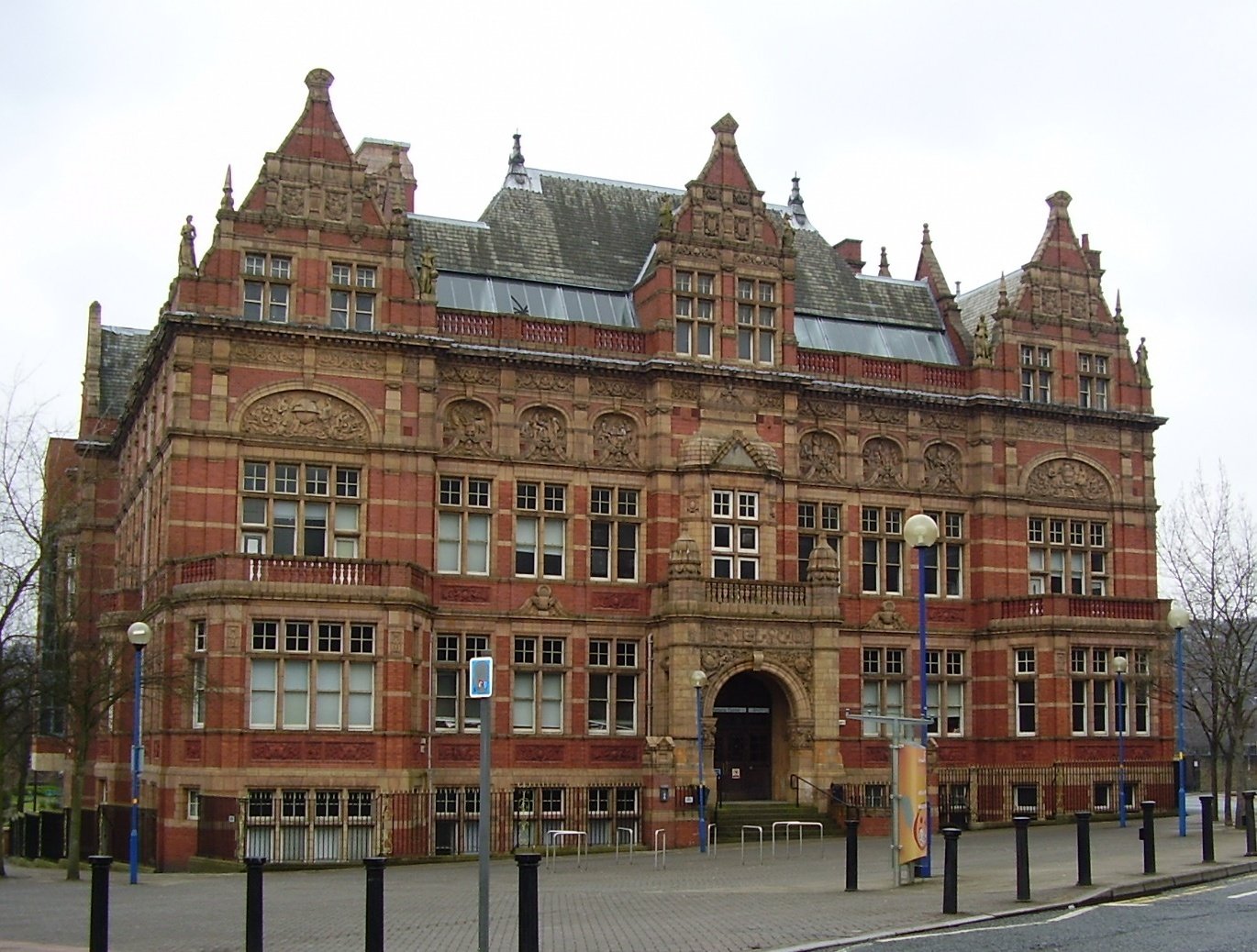#6949. Majestic Red Brick Façade of Victorian Public Building with Neo-Renaissance Motifs
This magnificent example of Victorian public architecture is executed in the Neo-Renaissance style with Gothic Revival elements. The façade displays characteristic red brick masonry with contrasting sandstone elements. The architectural composition is distinguished by symmetry and monumentality, typical of public buildings from the late 19th century.
Particularly striking are the richly decorated triangular gables with pointed finials that create an expressive silhouette along the building's upper line. The façade is divided into three tiers with clear horizontal articulation. The central entrance is accentuated by a sandstone arched portal featuring decorative carvings and heraldic motifs. Numerous decorative elements are distributed throughout the façade: relief panels, cornices, pilasters, and sculptural details.
Window openings are organized in rhythmic groups, creating a clear façade structure. The upper-floor windows have a rectangular shape and are emphasized by stone frames, while the lower level features wider windows divided by stone imposts. The roof has a complex form with dormer windows and chimneys, enhancing the picturesque silhouette.
When designing a façade for a modern private home, one can creatively reinterpret some techniques used in this historical building: combining different materials and textures (such as brick and plaster or natural stone), rhythmic alternation of window openings, using decorative elements at key points of the façade (entrance group, cornices), as well as thoughtful application of color accents to highlight architectural details.
